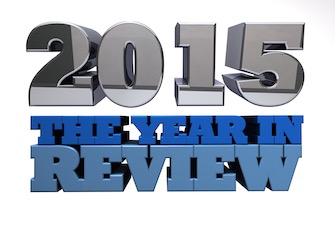 It is one again time to take a moment to look back on the year that was, reflecting on the biggest, most impactful moments of 2015. For us that means looking backward at the most impactful events in the world of intellectual property.
It is one again time to take a moment to look back on the year that was, reflecting on the biggest, most impactful moments of 2015. For us that means looking backward at the most impactful events in the world of intellectual property.
Unlike last year where there was near unanimous agreement that the Supreme Court’s decision in Alice v. CLS Bank was the biggest moment of the year, our panel of industry experts this year focused on a variety of different matters, for the most part. There was one recurring theme, however. The inability of patent reform to advance on Capitol Hill was undoubtedly one of the biggest stories of the year.
I will circle back with my own thoughts on 2015, but for now… without further ado… I present these reflections on 2015 from a diverse and distinguished panel of industry insiders.
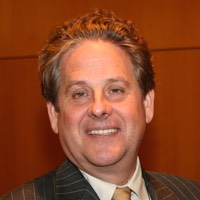 Bob Stoll
Bob Stoll
Partner, Drinker Biddle
Former Commissioner for Patents, USPTO
The biggest patent event of 2015 is not a single event at all, but a series of decisions by lower courts attempting to implement the Supreme Court guidance of Alice, Myriad and Prometheus on subject matter eligibility. What most had believed was a narrow carve-out by our highest court has resulted in decisions that are being extended in a manner that harms economic growth and job creation. Lower courts are barring patents for all sorts of invention including: innovative methods for determining fetal abnormalities; and, technologically syncing the lip movements of a cartoon character to mimic actual speech. Research in the emerging areas of personalized medicine, gene sequencing and computer-implemented inventions, where the US leads the world, is already beginning to dry up or move off shore.
Another big event this year was also a non-event. The decision by our legislators not to move forward with patent reform indicated that more time is needed to reach a consensus. While many issues being addressed by different legislative proposals expose problems with our patent system, several are being addressed by the Federal Circuit. Others are being handled by quality initiatives in the USPTO. And some of the legislative provisions seem broader than necessary to fix the problems. A pause in the legislative process may result in the emergence of a more streamlined consensus bill in the near future.
1. Congress’ failure to pass the Innovation Act
The biggest event of 2015 may have been a non event. In December of 2013, the House of Representatives passed the Innovation Act with 325 votes in favor to only 91 votes opposed. That is almost unheard of consensus for such far-reaching reform. I will happily confess error in noting that I was one of many observers who predicted, in the wake of the House vote, that some version of the Innovation Act would be signed into law. But in 2014 the measure died a quiet death in the hands of the Democratic controlled Senate Judiciary Committee. The bill was temporarily gone but not forgotten. After the midterm elections handed the Senate to the Republicans and increased GOP margins in the House, pro reformers felt the wind at their backs. The infringement lobby made a fresh push to enact the Innovation Act in 2015, with their usual overwrought cant about gnarled patent trolls taxing mom-and-pop coffee shops.
But 2015 is the year in which the innovation community got organized and offered a full-throated, well-reasoned defense of our nation’s patent system. That effort won over open-minded legislators who had previously heard only one side of the argument. To his great credit, freshman Senator Tom Cotton, who voted for the Innovation Act while in the House, became the first Republican to support Senator Coons’ balanced alternative legislation, the STRONG Act. Many House Republicans, including some in leadership, expressed public and private reservations about the most objectionable, innovating-stifiling provisions of the Innovation Act. After earning the support of 75% of elected Representatives in 2013, the bill was not brought to the floor at all this year, no doubt because it might not have passed if the yeas and nays had been tallied. Considering where we were when the year began, innovators have made huge strides. The progress was sorely needed.
2. Confirmation of Kara Stoll
Kara Stoll was unanimously confirmed to the Federal Circuit in July. And not a moment too soon. With Judge Stoll, the Federal Circuit gains the perspective of a respected patent litigator who boasts almost 20 years of experience in private practice. One can hope, and I predict, that Judge Stoll will (1) show trial courts and juries the deference they are statutorily and constitutionally due; (2) offer needed guidance to bench and bar in areas of patent law that the Federal Circuit has left murky (e.g., Section 101, damages); and (3) quickly earn a sterling reputation as a fair and impartial jurist of reason. The patent community could not have hoped for a better replacement for Judge Rader.
3. Teva v. Sandoz
Teva (decided in January) held that a district court’s findings of fact supporting a claim construction must be reviewed for clear error on appeal. This is a key decision in two respects. First, and most directly, the decision assures that fewer claim constructions will be reversed on appeal. Savvy litigators (and judges who wish to shield their claim-construction orders from appellate review) will make greater efforts to rely on extrinsic evidence to justify their preferred reading of disputed claims. The already important issue of forum shopping and venue selection will be magnified by Teva. Second, and less directly, Teva continues the more general line of Supreme Court cases that serve to remind the Federal Circuit that it should stop behaving as if the normal rules that govern appellate tribunals are inapplicable to it. (I predict Stryker v. Zimmer will also become a member of that line of cases in 2016). Here’s hoping the Federal Circuit will finally get the message.
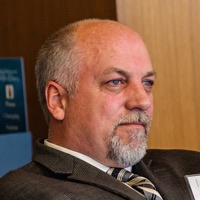 Paul Morinville
Paul Morinville
Managing Director of US Inventor, Inc.
I’m not sure this qualifies as an event, but the most significant moment in 2015, from my perspective, was the desire of Congressional staff to dig in and understand the complicated secondary market of patent assets, and then take action to stop the runaway freight train of patent reform.
At the start of 2015 I thought patent reform was going to pass. It had taken on a new head of steam and seemed there was nothing to stop it. In fact, that was what I was told by several Members of Congress.
Randy Landreneau and I had sat in 65 Senate offices in 2014. What surprised both of us was that most of the staff just didn’t understand how patents work. They didn’t understand the secondary market and how firms that purchase patents, like Intellectual Ventures, IPNav and others, in effect drive capital to startups like Randy’s and mine.
From January through May of 2015, we visited over 300 House offices. This time we brought as many inventors as we could find to the meetings. Charlie Sauer, the Innovation Alliance and others set up inventor panels for Members and staff, taught classes and seminars, and created the Inventor Caucus. Once they understood how the secondary patent market works many staff became active in educating other offices and even forwarded our paper sto those offices without our knowledge. When we arrived for an appointment at a new office, many times staff had already read our paper and had real questions.
In 2015, inventors organized, but without the engagement of Staffers it wouldn’t have mattered. The House is larger and, therefore, more cliquish, so many staffers called ahead to other offices to help us set meetings. They created buzz, and buzz kills bad bills.
Alden F. Abbott
Rumpel Senior Legal Fellow
Deputy Director, Meese Center for Legal and Judicial Studies
The Heritage Foundation
1. Two Contrasting Federal Circuit Decisions Regarding the Scope of Section 337 of the Tariff Act
The Federal Circuit rendered two important decisions in 2015 regarding the scope of Section 337 of the Tariff Act, as applied by the U.S. International Trade Commission to imports that infringe IP rights. The two decisions go in different directions, with one supporting an expansive view of import commerce, the other an extremely narrow view.
In ClearCorrect v. ITC, a divided three judge panel overturned a 5-1 majority decision of the ITC holding that the Tariff Act granted it the power to prevent the importation of digital articles that infringe a valid U.S. patent. Key to the Federal Circuit’s decision was a parsing of the Section 337 term “article” as only applying to “material things,” and thus not covering electronic transmissions of digital data. Judge Pauline Newman’s powerful dissent argued compellingly that contrary to the majority’s crabbed reading of “articles,” the term “was intended to be all-encompassing”, and “[t]he Supreme Court [itself] defined ‘articles of commerce’ to include pure information”. Given the increasing importance of IP and digital transmissions to the economy, this decision, if not reversed on judicial appeal or by Congress, threatens long-term harm to U.S. IP rights holders and innovation.
In marked contrast, in Suprema Inc. v. ITC, the en banc Federal Circuit, by a six-to-four vote, deferred to a broad U.S. International Trade Commission (“ITC”) statutory interpretation of the Section 337 phrase “articles that infringe.” Specifically, it held that goods that do not directly infringe a U.S. patent at the time they are imported nevertheless may be excluded from entry by the ITC if they are used, after importation, to directly infringe by the importer at the inducement of the goods’ seller. In so ruling, the en banc majority overrules a three-judge Federal Circuit panel that had reasoned there are no “articles that infringe” at the time of importation when direct infringement does not occur until after importation. The en banc decision is good news for believers in strong U.S. patent enforcement against infringing imports.
2. The Federal Government Continues its Campaign Against Standard Essential Patents (SEPs), Thereby Undermining Patent Rights
A standard essential patent (SEP) is one that is adopted as part of a particular standard, and which embodies technology that is necessary for production of goods according to that standard. Applying antitrust law to combat “hold-up” attempts (involving demands for allegedly “excessive” royalties) or injunctive actions brought by SEP owners against firms desiring access to the SEP’s technology is inherently problematic, as explained by multiple scholars (see here and here, for example). Disputes regarding compensation to SEP holders are better handled in patent infringement and breach of contract lawsuits, and adding antitrust to the mix imposes unnecessary costs and may undermine involvement in standard setting and harm innovation. What’s more, as FTC Commissioner Maureen Ohlhausen and former FTC Commissioner Joshua Wright have pointed out (citing research), empirical evidence suggests there is no systematic problem with hold-up. Indeed, to the contrary, an empirical study finds that SEP-reliant industries have the fastest quality-adjusted price declines in the U.S. economy – a result totally at odds with theories of SEP-related competitive harm.
Despite this evidence, during 2015 the federal government continued its campaign to unreasonably restrict returns to SEPs. In February 2015 the U.S. Antitrust Division issued a “business review letter” stating that it found no antitrust problem raised by the Institute of the Institute of Electrical and Electronics Engineers’ (IEEE) New Patent Policy (NPP) that substantially limits potential returns to SEPs. That business review letter emphasized the NPP’s role in combating the risk of “hold-up,” without considering the NPP’s serious anticompetitive features and potential harm to innovation. Subsequent actions by the leaders of the U.S. antitrust agencies continued to undermine SEPs. For example, U.S. FTC Chairwoman Edith Ramirez filed a comment with the U.S. ITC arguing that, before issuing an exclusion order, the ITC should require an SEP holder to show that the infringer is unwilling or unable to enter into a patent license on “fair, reasonable, and non-discriminatory” (FRAND) terms – a new and major burden on the vindication of patent rights. And the head of the Justice Department’s Antitrust Division, Assistant Attorney General William Baer, delivered a major speech suggesting serious competition concerns raised by possible SEP-related “hold-ups,” and by SEP holders threatening to seek U.S. ITC exclusion orders.
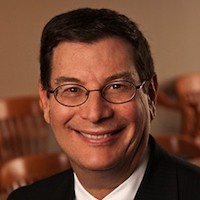 Stephen Kunin
Stephen Kunin
Partner, Oblon, McClelland, Maier & Neustadt, L.L.P.
The biggest patent cases in 2015 that impacted patent law in 2015 dealt with deference given district court judge’s claim construction when they relied on extrinsic evidence (Teva v. Sandoz), approval of the broadest reasonable interpretation standard for AIA reviews, and the non-reviewability of PTAB decisions to institute AIA trials (In re Cuozzo), proving direct infringement when multiple parties are required to perform claim steps (Akamai v. Limelight), and limitations of the authority of the ITC with respect to inducement only after product importation and lack of authority for importation of infringing digital products (Suprema and Clear Correct). Two of these decisions are highlighted below:
In Teva v. Sandoz the Supreme Court opened the door for deference to be given district court judge’s claim construction when based on extrinsic evidence such as technical expert testimony. Nevertheless, claim construction remains a question of law and is subject to de novo review when limited to intrinsic evidence. Only time will tell as to how frequently such deference will be given.
The Federal Circuit sitting en banc in Akamai v. Limelight clarified the law of direct infringement by providing liability for joint infringement when customers perform some steps of patent in conjunction with acts performed by the corporate service provider reducing the need to legislative action to provide such protection to patent owners.
 Marla Grossman
Marla Grossman
Partner, American Continental Group
Three of the most impactful events in the IP industries were a study in contrasts – one reflected a true changing of the guard; the other was “déjà vu all over again”; and the third was a seemingly modest moment, but one that has the potential to have outsized, beneficial consequences for the patent community.
1. Lauroesch Comes to Washington
2015 saw the departure of one of the IP giants in Washington DC. After over thirty two years at the helm of the Intellectual Property Owners Association (IPO), Executive Director Herb Wamsley retired. Herb was one of the IP system’s most stalwart guardians. Viewed as a “walking encyclopedia of IP law,” Herb was one of Washington DC’s most talented, wise and measured advocates. He spent a professional life committed to promoting and protecting intellectual property so that his country could enjoy the fruits of its intellectual labors.
Finding a new and fitting leader for IPO would seem a daunting task, but a successor was unanimously chosen from an exceedingly impressive list of applicants. IPO’s new Executive Director is Mark Lauroesch, a world-wide IP leader who has played an active role in advocating for and promoting improvements in many IP regimes both in the U.S. and abroad (including Europe, China, Taiwan, Korea, and Japan). His technology expertise, substantial negotiation skills, and strength as a global litigation strategist position Mark to lead IPO into the next age.
Mark was previously in-house counsel with Corning for 20 years, including 10 years as VP and General IP Counsel. Early in his career, he was an associate with Finnegan, Henderson, Farabow, Garrett & Dunner, a judicial law clerk for Chief Judge Paul Michel at the U.S. Court of Appeals for the Federal Circuit, and a senior research engineer at Northrop Grumman Corporation.
Under Mark’s leadership, IPO has new challenges and opportunities — to extend its global reach, to unify an increasingly segmented patent constituency, and to further educate policy makers and the general public about the importance of IP at a time when its value is increasingly being called into question.
Mark has enormous shoes to fill, but he has the opportunity and the ability to leave a prodigious footprint of his own.
2. PTO User Fee Diversion by a Different Name?
On July 30, 2015, Department of Commerce Deputy Secretary Bruce Andrews announced a transformation of the Department’s “mission enabling services” which will include services that are shared across all Department of Commerce bureaus. A month later, during the August 20 Patent Public Advisory Committee (PPAC) meeting, the USPTO indicated that it is evaluating this shared services initiative of the Department of Commerce to determine whether it should share its human resources, information technology (IT) and procurement functions with other parts of the Department. While I normally support efforts to improve the efficiency and effectiveness of governmental services, this initiative seems an attempt to recreate an old problem. It “smells” a lot like a back door to diversion of USPTO user fees, a situation that stakeholders have worked hard to resolve over many years.
The USPTO is fundamentally different from other Commerce Department bureaus in that since 1990, the agency has been entirely funded by private innovators through the payment of patent and trademark application and user fees. For years, Congress and the Department of Commerce used the USPTO as a piggy bank to fund unrelated Department of Commerce programs. This led to a justifiable outcry amongst the nation’s innovators who were footing the bill for what ordinarily would have been taxpayer funded services. In fact, the effort to preserve the ability of the USPTO to keep all of its user fees was a driving force for and fundamental reform of the Leahy-Smith America Invents Act.
It is imperative that any new, future “shared services” should not undermine the public-private partnership agreement that gave rise to USPTO users agreeing to pay user fees in the first place. In 2015 we learned of the newest governmental initiative that could potentially distort the intent of the Leahy-Smith America Invents Act and/or create a new form of fee diversion. Hopefully 2016 will be the year that USPTO users send a clear message to the Administration that anything that impedes the modernization of the IT systems at the USPTO or diminishes the effectively of the agency’s patent quality initiative should not and will not be tolerated.
3. Better Prior Art = Better Quality Patents
In 2015, the USPTO initiated the Patent Application Alert Service (PAAS). This seemingly modest initiative might end up being a game-changer for patent quality. PAAS enables patent applicants to stay up-to-date with patent application pre-grant publications at USPTO that are potentially relevant to their applications. Through customizable alerts, anyone can be notified when another patent application is published by the USPTO which meets criteria set by that person. The notification received contains links to the Application Patent Full Text system (AppFT) allowing one to retrieve the full text and images of the pre-grant publications meeting the criteria set by the user.
The USPTO has appropriately attempted to maintain a balance of supporting applicants’ rights while not overlooking relevant prior art. Starting this year, it now provides PAAS to interested parties in order to achieve that goal. In addition, PAAS offers limited search capabilities in the free service in order to avoid competing with existing commercial services.
Better prior art for examiners means better quality patents. 2015 might be the year that we see this notion become a reality.
Three impactful events in 2015: one was a regime change, one was more of the same, and one was a seemingly modest initiative that could end up being a game-changer: all three with the potential to change the IP landscape in significant, but very different ways.
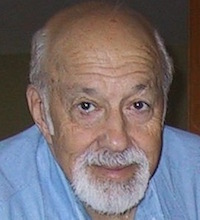 Martin Goetz
Martin Goetz
The Father of Third Party Software
Regarded as the first person ever awarded a “software patent”, U.S. Patent No. 3,380,029
On average, the biggest moments were happening almost daily. It was the high rejection rate of those so-called “software patents” (where software is all, or part of, the chosen implementation). According to the research done by the University of California and described in “Software Patents: A One-Year Review of Alice v. CLS Bank” after the decision almost 83% of the 345 patents or patent applications reviewed by the PTAB and the Courts were deemed invalid.
This high rejection rate is actually a good omen for those that believe in the benefits of the patent system. Under the US Patent System that was enacted in 1790 one gets a patent only on inventions. When the Alice Supreme Court judges unanimously agreed that the critical issue is whether there is an invention, and not how one can implement the invention, the Supreme Court finally ended the debate on whether computer-implemented inventions are patentable
From my vantage point this high rejection rate was to be expected because the PTAB and the Courts did not have the proper guidelines or expertise in the past to reject computer-implemented patents or patent applications where the automated (or computerized) process was obvious or abstract.
One of the reasons that there has been such negativity over the past 50 years against computer-implemented (software) patents was because often when a person or organization automated (computerized) a process they applied for a patent. The s… hit the proverbial fan when Amazon patented its so-called one-click invention. Nothing could be a more obvious use of a computer. Storing and retaining information about a customer is one of the most obvious uses of a computer. It was a standard practice in developing computer applications even back when I started in the computer software field in 1954. Another very, very obvious patent that somehow made it past the patent office was the “Buy it now” patent that EBay fought in 2001 and settled in 2008.
As David Kappos, the former head of the Patent office stated…“software has increasingly become a core driver of competitive advantage in every corner of the business world”. Very true. But in many cases, the inventive concept is not in the software, but in other aspects of the invention.
Let’s look at an important invention that uses software in a very obvious (conventional) way. In the famous Argus II Retinal Visual Prosthesis invention, the specification included a pair of glasses attached to a video camera unit and a computer and software The invention was awarded a special patent #8,000,000 by the USPTO, and Time Inc. named the Argus II artificial retina one of the best 25 inventions of 2013. But the use of the software was obvious and that was not the inventive concept. The invention was how the video information was transformed into instructions transmitted wirelessly to a receiver that is surgically implanted in and around the eye. The signals were then sent to an electrode array, attached to the retina, which emits small pulses of electricity. These electrical pulses bypassed the damaged photoreceptors and stimulated the retina’s remaining cells to transmit the visual information along the optic nerve to the brain.
Would anyone want to deny the Artificial Retina “software patent” its just rewards? My hope is that because of the Alice decision and the high rejection rate of questionable patents, only true inventions will now receive patents by the Patent Office and the number of applications to the Patent Office will be significantly reduced.
Updated Tuesday, December 29, 2015, at 10:23pm ET

![[IPWatchdog Logo]](https://ipwatchdog.com/wp-content/themes/IPWatchdog%20-%202023/assets/images/temp/logo-small@2x.png)

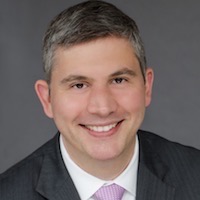
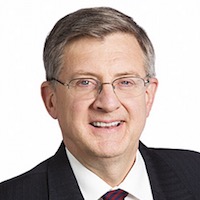
![[Advertisement]](https://ipwatchdog.com/wp-content/uploads/2024/04/Patent-Litigation-Masters-2024-sidebar-early-bird-ends-Apr-21-last-chance-700x500-1.jpg)

![[Advertisement]](https://ipwatchdog.com/wp-content/uploads/2021/12/WEBINAR-336-x-280-px.png)
![[Advertisement]](https://ipwatchdog.com/wp-content/uploads/2021/12/2021-Patent-Practice-on-Demand-recorded-Feb-2021-336-x-280.jpg)
![[Advertisement]](https://ipwatchdog.com/wp-content/uploads/2021/12/Ad-4-The-Invent-Patent-System™.png)







Join the Discussion
8 comments so far.
staff
December 31, 2015 11:36 pm‘decision by our legislators not to move forward with patent reform…’
The problem is that none of these bills address actual problems and that most often their provisions have little to do with the fictitious evils they claim exist. They are red herrings. It’s long overdue to call these bills what they are and not what the originators want everyone to call them. They are not ‘reform’, or at least only from the perspective of infringers. From an inventor perspective they are the opposite as all they do is make it easier for large infringers to rob and crush their small competitors. Perhaps we should call them inventor destruction bills, or legalize theft bills?
Let’s throw it out there and see if we can come up with a more catchy and yet still honest name for them. Don’t believe the lies of thieves.
For more information please visit us at https://aminventorsforjustice.wordpress.com/
or, contact us at [email protected]
step back
December 31, 2015 02:21 pmNight Writer @6
Bingo!
I too have experience with “expert systems”, “databases”, “networks”, etc.
One cringes when one sees judges, even Fed. Cir. judges make short shrift of these complex computer-related technology areas.
On the one hand, the phrase “forgive them they know not what they do” comes to mind.
On the other hand, the phrase ridicule them because “they know not what they do” comes to mind.
Bad fact patterns make bad law. Vehicle Intelligence v. Mercedes-Benz (Fed. Cir. 2015) is a clear example of that adage.
Thanks for bringing it up NW.
Night Writer
December 30, 2015 08:16 pmVehicle Intelligence v. Mercedes-Benz (Fed. Cir. 2015)
Alice appears to be a convenient way for judges to say that they are going to tell us what the art field really is with no evidence.
Fact is that I’ve done AI research, I’ve taught AI classes with expert systems, I’ve been a software engineer, and the claims in view of the specification are enabled and I know the metes and bounds of this claim.
This opinion is not patent law, but the application of a policy the SCOTUS passed. They should start putting candle wax stamps on their opinions like they did in the ancient witch burning trials. Let us all know that this has nothing to do with the law, but with power.
Night Writer
December 30, 2015 03:29 pmI agree step back @4. Not sure why Goetz is going after patents these patents, but the quantum of invention is one of the cornerstones of the anti-patent movement.
step back
December 30, 2015 07:36 amPersonally, I whole heartedly agree with Bob Stoll (1st commentator above) and disagree with Martin Goetz (last commentator above).
The year 2015 was the year of the sycophantic followship of the Supreme Court insanities of Bilski, Alice, Mayo and Myriad.
It simply boggles the rational person’s mind that there are so many cowardly people in power on the lower rungs of the judicial infrastructure (including at the PTO) who feel themselves “bound” to whatever Medieval mania SCOTUS dishes out.
Who died and made SCOTUS all three branches of our government including de novo fact finders in chief? By what rational means do they come to declare that patents involving computer hardware apparatus and molecular biology chemistry stifle “innovation”?
The ones who are actually stifling innovation and killing “science” are them who spot themselves in the mirror and see yet another clever all knowing one among the SCOTUS 9. To these folk, reflection is abstract in of itself and not applied physics by way of which photons interact with electron wave functions in metallic undercoatings. It’s all myth, magic and the Machiavellian doings of evil patent drafters out to make others feel less than supremely intelligent.
How Martin Goetz can get away with saying the stuff he does I don’t know. The Amazon one-click patent was adjudicated in many a court room and found to be nonobvious and patent eligible subject matter. And yet these sycophants keep towing it out from under the rug as if it were their moment of monumental victory.
Google find wikipedia.org/wiki/1-Click#Licensing. Why did all these tech savvy parties end up having to pay royalties after attacking the patent again and again?
http://patentu.blogspot.com/2015/12/only-echos-of-their-abstractinating.html
Gene Quinn
December 29, 2015 02:41 pmNight Writer-
Thanks. I was extremely pleased this year. Not to suggest that I’m unhappy in other years, but I cast the net wide and hope people have time to contribute. This year I specifically tried to cast the net even wider than normal and it paid off, in my opinion. A very diverse group of people with very different experiences.
Happy new year!
-Gene
Fish Sticks
December 29, 2015 02:03 pmBetter Prior Art = Better Quality Patents — I agree. It forces the applicants to clarify, narrow and distinguish their claims.
Night Writer
December 29, 2015 11:58 amWow! What a great collection of thoughts on patent law. How depressing, though, that almost all of them are very harmful to patent law. I am going to have to reread this and think it over before commenting further.